A Study Session in Action
This time of year is stressful for students as exams are looming and often the reality sets in that they really don’t know how to study. Yesterday I was asked to help a Year 11 student with an important test coming up in 2 days. Her parents reported that she has been distracted with a TV show on Netflix and playing sport and had commented that there was no use studying for the Human Biology test as she would fail anyway. Does this sound familiar in your home? As I was at their home for dinner I offered to help…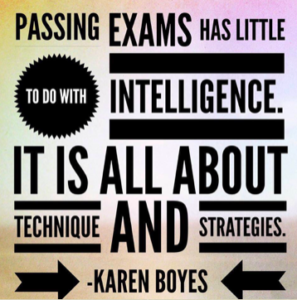
After a tense talk about how capable she is (with her refuting it over and over), and that passing just requires more effort than intelligence she begrudgingly started to work with me to learn her bio. Below is the process we started.
Please Note: Two days before the test is NOT enough time to learn the amount of content that she had, however something is better than nothing, and once she got into the flow, she actually found it was easier than she thought.
1 Decide on where to start. With 3 weeks of content from a daily lesson at school there was a great deal of content to be able to recall, so the first step was to decide on where to start. Choosing has always been a challenge for this young lady as she does not like to be wrong. However she finally decided to start with the brain. Here are her notes on the brain from class.
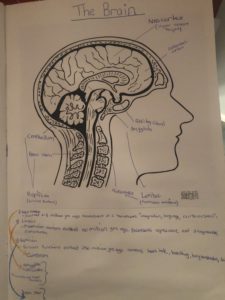
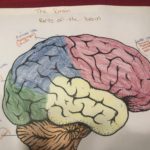
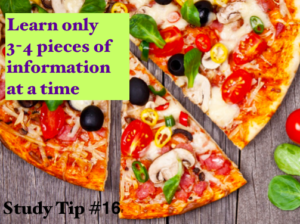
2 Chunk it down. Your short term memory has a limit of being able to recall information so just learn a maximum of 3-4 pieces of information at a time. We took the 3 main parts of the brain, the Reptilian, Limbic and Neo Cortex and started there.
3. Add actions. Muscle memory is very strong and by adding movement to learning enhances the brains ability to recall. It is important that the student does the actions and not just the teacher, so the memory is embedded strongly. Here is what we did: We represented these with actions:
* Reptilian – hold your hand up and close your fist and release your index finger. This represented the brain stem coming from the spine up into the base of the head.
* Limbic – Wrap your other hand around the index finger to show this part of the brain wraps around the Reptilian with love. (The love indicates that this is the emotional centre of the brain.)
* Neo Cortex – releasing the limbic hand – make a sweeping motion over the where the limbic hand was, showing the next level which covers the first two.
We practiced and revised this a couple of times having her say them out loud.

4 Add Visual prompts and further detail. We then drew a diagram of the brain (not accurately) with the starting letter of key words as prompts. This developed step by step as she used her notes from class to find the information. She said this out loud and it sounded like this: “At the base of the brain is the Reptilian brain which is responsible for Survival. It controls your Breathing, Heart rate, body Temperature and Balance. Surrounding this is the Limbic brain which is about emotion and our Likes and Dislikes. Surrounding this is the Neo Cortex where Thinking happens. It is where Imagination, Language and Concentration happens.” While she was speaking this she was also doing the actions from above.
5 Repeat, repeat, repeat. Again she practiced this a couple of times with the notes and then took them away to see if she could do it from memory. This is an important step, as in an exam or test, there are no visual reminders and it must be from your memory.

6 Tell someone. Talking aloud is a powerful way to learn. Have you ever asked someone to remind you to remember a task you need to do, such as a meeting at 3pm or to take an item with you when you leave the house? Does that person usually need to remind you? Not usually! Saying it aloud again reinforces it in your memory. At this juncture, I sent her to tell her Dad what she had just learned. It doesn’t matter who you tell. Tell your cat, dog or teddy bear! It is about creating another chance to embed the information in the brain through another channel.
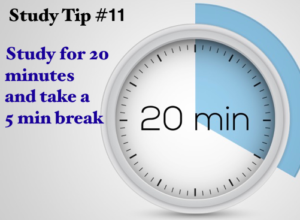 7 Celebrate the mini successes & take a 5 minute break. We fist pumped each other and she took a 5 minute break. Learning takes energy as the brain is an energy hog. Neuroscience research shows the brain takes up approximately 3% of your total body weight and uses over 20% of the fuel (food) you consume. This increases with complex thinking.
7 Celebrate the mini successes & take a 5 minute break. We fist pumped each other and she took a 5 minute break. Learning takes energy as the brain is an energy hog. Neuroscience research shows the brain takes up approximately 3% of your total body weight and uses over 20% of the fuel (food) you consume. This increases with complex thinking.
8 Check you know it and add the next layer. A quick 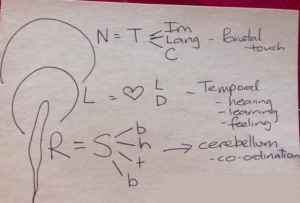 revision to anchor in the success and next we added the next layer:
revision to anchor in the success and next we added the next layer:
Cerebellum is responsible for co-ordination & balance
Temporal Lobe is responsible for hearing, learning and feeling
Parietal Lobe is concerned with language & touch
A few repetitions with this and she could recall it without the visual prompt.
9 Leave the easy until last. Now we needed to add 2 more: the Frontal and Occipital Lobe. The Frontal Lobe was a quick discussion about what lay behind her forehead and why it was important to keep this part of your brain safe (not heading a ball in football etc) and it’s role of doing complex, hard, problem solving. The Occipital Lobe (the visual processing centre) was drawn with the O as an eye and she was done. Adding these easier concepts made it simple to recall at the end.
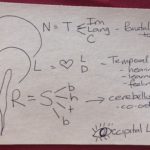
10 More repetition. She spent a couple of minutes revising the information with me and then her Dad.
11 Another break to allow the brain to process and rest. Just like a computer file taking time to download, it also takes time in the brain for information to cement. Frequent small breaks can assist with this.
12 The next concept. After an extended break and dinner, we did a quick revision and started on a new topic; The nervous system. Laying in front of the fire, we discussed the 3 main parts to learn: Cranial, Peripheral & the Autonomic systems. Tired and still fragile, she made up a small dance like routine (whilst still laying down.) She simply touched, pointed to or waved the part of the body concerned. This ended up being very amusing and the laughter was a great welcome from the tenseness of the afternoon.
Cranial: from the brain to the eyes, ears, mouth, head and spine
Peripheral: from the spine to the arms & hands, the legs to feet
Autonomic: From the spine to the lungs, heart, stomach, intestine, bladder and reproductive organs.
 13 Revise the next day. As organised I rang her the next morning and we took 2 minutes before she left for school to go over what we had learned last night. She had a couple of hesitations and one part she could not recall, so that is part of the goal for the next session after school.
13 Revise the next day. As organised I rang her the next morning and we took 2 minutes before she left for school to go over what we had learned last night. She had a couple of hesitations and one part she could not recall, so that is part of the goal for the next session after school.
14 Refuel and repeat. After school today will be time to refuel, have a rest and then get back into it with revising yesterdays content, paying specific attention to what she missed in the morning and then follow a similar process for at least 2 more areas: The heart and Lymphatic systems.
Whilst 2 days has not been enough time for Miss 15 to learn all she needs to know and understand for this test, I hope it has been an eye-opener for her about her potential and ability to learn and remember. We talked about chunking it down over more days next time and the fact that she can ask for help whenever she needs.
To access more study tips please download the iStudyAlarm on any smart phone. It is now FREE. Here you will find 27 study tips, 12 exam ideas, 12 break ideas and a motivate me button.
Study Smart & Pass
Karen
Tags: iStudyAlarm, Karen Tui Boyes, learning, Study Skills, Study Smart
Published on Wednesday, September 26th, 2018, under Learning, Study Skills

Karen you are a darling. That same incredible message I got from you some 20 years ago changed my life. You not only told me I could learn, retain, and recall information using the right method for me but you showed me and then let me experience it for myself. This allowed me to refocus and pursue my life long dreams that had faded as I left school at 15. Those dreams are now realities some so much more than I ever thought or imagined they could be. I am truly grateful. Keep sharing your beautiful gift.
Helen
Thanks Helen – I love that the work we both do opens up possibilities and potential in others. Keep shining bright!
Rainbows and sunshine
Karen